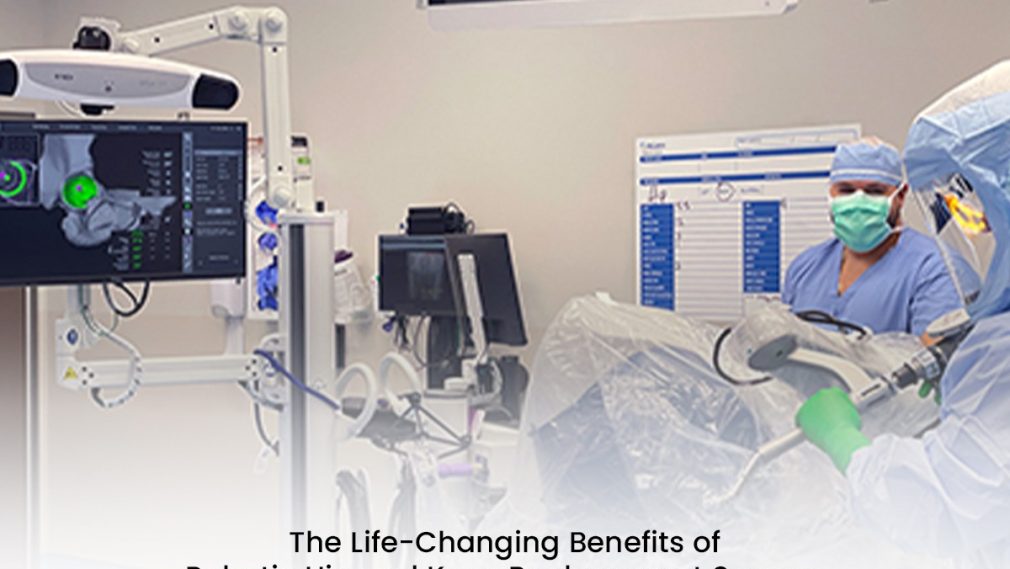Revolutionizing Mobility: Robotic Hip Replacement Surgery Unveiled – Everything You Need to Know

When it comes to hip problems and the need for a hip replacement, understanding the basics can provide valuable insights. This article aims to shed light on who might require a hip replacement, the different types available, the recovery process, and more. Whether you’re experiencing hip pain or seeking information for someone you know, read on to discover key details about hip replacements.
The hip joint is a vital part of the human body, responsible for providing stability, support, and a wide range of motion. However, various factors such as aging, injury, or certain medical conditions can lead to the deterioration of the hip joint, causing pain and reduced functionality. In such cases, hip replacement surgery may be considered an effective solution.
Table of Contents
ToggleWho Might Need a Hip Replacement Surgery?
Hip replacements are commonly recommended for individuals who experience severe hip pain and mobility limitations that significantly impact their quality of life.
The following are some common conditions that might necessitate a hip replacement:
1. Osteoarthritis:
This degenerative joint disease affects the cartilage in the hip joint, leading to pain, stiffness, and reduced mobility.
2. Rheumatoid Arthritis:
An autoimmune disease that causes inflammation in the joints, including the hip joint.
3. Hip Fracture:
A break in the hip bone, often caused by a fall or other traumatic injury, which may require a hip replacement to restore function.
4. Avascular Necrosis:
A condition where the blood supply to the hip joint is disrupted, leading to bone tissue death and eventual joint collapse.
Types of Hip Replacements
Hip replacements can be classified into two main types: Total Hip Replacement (THR) and Partial Hip Replacement (PHR). Let’s explore each in detail:
1. Total Hip Replacement (THR)
In this procedure, both the ball and socket of the hip joint are replaced with artificial components. THR is typically recommended for severe arthritis or hip fractures that affect the entire joint.
2. Partial Hip Replacement (PHR)
Also known as hip hemiarthroplasty, this procedure involves replacing only the ball component of the hip joint, while leaving the socket intact. PHR is commonly performed when the fracture is limited to the ball portion of the joint.
The Hip Replacement Surgery Process

Before undergoing hip replacement surgery, thorough evaluation and preparation are necessary. Here’s a general overview of the surgical process:
1. Preoperative Assessment
Your orthopedic surgeon will conduct a comprehensive examination, including medical history review, physical examination, and imaging tests (such as X-rays or MRI scans).
2. Anesthesia
During the surgery, either general anesthesia or regional anesthesia (such as epidural or spinal anesthesia) will be administered to ensure a pain-free experience.
3. Incision and Joint Preparation
The surgeon will make an incision to access the hip joint, remove the damaged bone and cartilage, and prepare the remaining surfaces for the prosthetic components.
4. Implant Placement
The artificial components (prosthesis) will be securely fixed into the prepared bone surfaces. These components can be made of metal, plastic, or ceramic materials.
5. Closure and Recovery
Once the prosthesis is in place, the incision will be closed, and you will be moved to a recovery area. Physical therapy and rehabilitation will follow to aid in the healing process and restore hip function.
How Robotic-Assisted Hip Replacement Is Revolutionizing this Surgery

In recent years, significant advancements have been made in the field of orthopedic surgery, particularly in the area of hip replacements. One such groundbreaking innovation is hip replacement, a cutting-edge technology that has revolutionized the way these procedures are performed. By combining the expertise of skilled surgeons with the precision and accuracy of robotic systems, robotic-assisted hip replacement offers several advantages over traditional methods.
Let’s explore the benefits of robotic surgery over traditional surgery:
1. Enhanced Precision and Accuracy:
Robotic hip replacement enables surgeons to achieve a level of precision and accuracy that was previously unattainable. The advanced robotic systems used in these procedures utilize sophisticated imaging technology to create a three-dimensional model of the patient’s hip joint. This detailed virtual representation allows the surgeon to carefully plan the surgery, optimizing the placement and alignment of the prosthetic components with exceptional accuracy.
2. Personalized Surgical Approach:
Every patient is unique, and their hip anatomy can vary significantly. Robotic-assisted hip replacement offers a personalized surgical approach tailored to the individual patient’s needs. The preoperative planning phase involves the creation of a virtual model of the patient’s hip joint, which allows the surgeon to analyze the specific anatomical structure and identify any abnormalities. By having this detailed information, the surgeon can customize the surgical procedure to ensure the best possible outcome for the patient.
3. Minimally Invasive Technique:
One of the significant advantages of robotic hip replacement is the use of a minimally invasive surgical technique. Unlike traditional open surgeries, which require large incisions, this advanced approach utilizes smaller incisions. The robotic system provides the surgeon with enhanced visibility and dexterity, allowing for precise movements through these smaller openings. As a result, patients experience less trauma to the surrounding tissues, reduced post-operative pain, and faster recovery times.
4. Real-Time Feedback and Monitoring:
During the robotic hip replacement procedure, the robotic system provides real-time feedback and monitoring to the surgeon. This valuable information includes data on joint stability, soft tissue tension, and leg length, among others. By continuously assessing and analyzing this feedback, the surgeon can make immediate adjustments as necessary, ensuring optimal prosthetic placement and alignment. This real-time monitoring capability enhances the overall accuracy and safety of the procedure.
5. Improved Implant Longevity:
Proper alignment and positioning of the prosthetic components are crucial factors for the long-term success of a hip replacement. With a robotic hip replacement surgery, the precision and accuracy of the procedure result in improved implant longevity.
By precisely aligning the components to match the patient’s unique anatomy, the risk of premature wear and implant failure is significantly reduced. This translates into a more durable and longer-lasting hip replacement, enhancing the patient’s quality of life for years to come.
Recovery and Rehabilitation
Recovery after hip replacement surgery is a gradual process. Here are some important aspects to consider:
1. Hospital Stay:
Typically, patients remain in the hospital for a few days after surgery. The healthcare team will monitor your progress, manage pain, and assist with early mobility exercises.
2. Physical Therapy:
After being discharged, a physical therapist will guide you through exercises and movements to strengthen the hip muscles, improve flexibility, and restore mobility.
3. Pain Management:
Medications will be prescribed to manage post-operative pain. Follow your doctor’s instructions and inform them of any concerns or adverse reactions.
4. Returning to Daily Activities:
As your hip heals, you will gradually regain the ability to perform everyday tasks such as walking, climbing stairs, and driving. It’s essential to follow the recommended guidelines provided by your healthcare team.
5. Long-term Care:
While hip replacements can last for many years, it’s important to maintain a healthy lifestyle, avoid excessive strain on the joint, and attend regular check-ups to monitor the condition of the prosthesis.
Potential Complications and Risks
As with any surgical procedure, hip replacements carry some risks. These may include:
1. Infection at the surgical site
2. Blood clots
3. Dislocation of the prosthesis
4. Nerve damage
5. Unequal leg length
6. Prosthesis wear or loosening over time
It’s crucial to discuss potential risks and complications with your surgeon to make an informed decision about the surgery.
Conclusion
Hip replacement surgery is a common and effective procedure for individuals suffering from severe hip pain and functional limitations. By understanding who might need a hip replacement, the types available, and the recovery process, you can make informed decisions and better navigate the treatment journey.
Further, robotic-assisted hip replacement represents a remarkable advancement in the field of orthopedic surgery. Through its enhanced precision, personalized surgical approach, minimally invasive technique, real-time feedback, and improved implant longevity, patients undergoing hip replacement treatment can expect a higher level of surgical accuracy, reduced pain, faster recovery, and improved long-term outcomes.
Remember, when it comes to orthopedic surgery, choosing the right treatment option should be based on a thorough evaluation and consultation with a qualified hip replacement surgeon. With the right medical care and rehabilitation, a hip replacement can significantly improve your quality of life and restore mobility.






